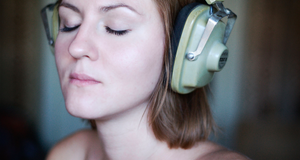From Elon Journal of Undergraduate Research in Communications VOL. 4 NO. 1The Influence of Rap and Hip-Hop Music: An Analysis on Audience Perceptions of Misogynistic LyricsIV. FindingsPart I: Content AnalysisUsing a content analysis method, this study analyzed the lyrics of 20 rap/hip-hop songs included in Billboard’s Year-End “Hot 100” singles list ranging from 2000-2010 (Refer to Table 1 on page 76). The sample set of music was selected based on the misogynistic themes appearing within the lyrics of these popular hits, all of which were labeled as explicit.
Coding Outcome. As shown in Figure 1, eight of the songs (40%) sampled were coded strictly for physical violence; none of the songs were coded for strictly rape/sexual assault; two songs (10%) were coded strictly for sexual conquest; and two songs (10%) were coded strictly for demeaning language. Eight of the songs (40%) contained lyrics coded into more than one category of misogynistic content. Three songs (15%) were coded for the demeaning language and rape/ sexual assault categories. Two songs (10%) were coded for the rape/sexual assault, sexual conquest and demeaning language categories. One song was coded for the physical violence, rape/sexual assault and sexual conquest categories. In addition, one song was coded for demeaning language and sexual conquest categories, along with one song coded for the rape/sexual assault and physical violence categories. Figure 1: Coding categories
Five songs by rapper Eminem were included in the coding sample, which represents one-fourth of all songs sampled. Three songs by rap/hip-hop artist Ludacris were included in the coding sample, representing 15% of all songs sampled. Rapper Mystikal was included in the sample for three of his songs, 15% of the study sampling. All of the songs by Eminem and Ludacris featured in the sample included lyrics depicting physical violence against women. Three of the songs (15%) fell into the rap genre, with the rest classified as hip-hop music. Eminem was the only Caucasian artist featured in the song sampling, and African American artists performed the remaining 15 sampled songs (75%). Solo artists performed half (n=10) of the songs in the sample. Two (10%) of the songs sampled included a male/female artist combination, “Danger (Been So Long)” by Mystikal and Nivea and “Love the Way You Lie” by Eminem and Rihanna. Figure 2: Levels of Misogyny
Songs containing misogynistic lyrics appeared in the sample with the greatest frequency during the first half of the decade (2000-2005). Songs featured on the Billboard “Hot 100” chart between 2000 and 2001 (n=7) contained the greatest concentration of misogynistic lyrics over a two-year period. Four out of seven songs (57.1%) during this timeframe contained two or more references to misogyny in their lyrics. Additionally, all of the songs sampled from 2006, which accounted for 15% of the total sample frame, featured lyrics suggesting physical violence against women. (For more detail, refer to Appendix 1 to view the coding sheet used in this study.) Songs referencing acts of physical violence toward womenThe artists whose songs contained lyrics strictly coded under the physical violence category included Eminem; Ludacris, Mystikal and I-20; Dem Franchize Boyz; Busta Rhymes; and Rihanna. There were 17 references to physical violence within this song sample, which are denoted with dotted lines, and the song containing the most references was Eminem and Rihanna’s “Love the Way You Lie” (n=4). The following are lyrics from Eminem’s songs included in the sample that glorify physical violence toward women and included between one to four misogynistic references:
The following lyrics from individual/group artists also contain one or more references in relation to men’s perpetrating violent physical acts toward women:
Songs labeling women in derogatory ways using demeaning languageThe artists whose songs contained lyrics strictly coded under the demeaning language category were Young Money and Trey Songz. There were five total references in the songs’ lyrics labeling women in derogatory ways.
Songs portraying sexual conquestThe artists whose songs contained lyrics strictly coded under the sexual conquest category were Ja Rule and Case, and Ludacris. There were two total references in the songs’ lyrics that represented men using women only for their sexual value.
Songs coded for two or more categoriesThe artists whose songs contained lyrics coded for the demeaning language and rape/sexual assault categories included Dr. Dre and Snoop Dogg; Mystikal and Nivea; and Trillville & Cutty. The underlined words were coded under the rape/sexual assault categories, and bolded words were coded under the demeaning language category. There were 10 total instances of referring to women in misogynistic ways in the combined categories above, and the song containing the most references was Mystikal and Nivea’s “Danger (Been So Long)” (n=5).
The artists whose songs contained lyrics coded for the rape/sexual assault, sexual conquest and demeaning language categories were Jay-Z and UGK, and Mystikal. The underlined words were coded under the rape/sexual assault category, bolded words were coded under the demeaning language category and double underlined words were coded under the sexual conquest category. There were 13 total references for the above category, and the song containing the most references was Mystikal’s “Shake Ya Ass” (n=9). This also made it the most misogynistic song overall in the entire coding scheme.
Mr. Cheek’s “Lights, Camera, Action” was coded for the demeaning language and sexual conquest categories. The bolded word was coded under the demeaning language category, and the double underlined phrase was coded under the sexual conquest category.
Lil Jon, Usher & Ludacris’ “Lovers & Friends” was coded into the rape/sexual assault, sexual conquest and physical violence categories. The underlined words were coded under the rape/sexual assault category, double underlined phrases were coded under the sexual conquest category and the dotted-lined phrase was coded under the physical violence category.
Eminem, Dr. Dre and 50 Cent’s “Crack a Bottle” was coded into the rape/sexual assault and physical violence categories. The underlined words were coded under the rape/sexual assault category, and the dotted-lined phrase was coded under the physical violence category.
Part II: SurveyIn order to evaluate college students’ attitudes toward and perception of misogynistic rap/ hip-hop music, this study conducted a non-probability survey administered via Survey Monkey. Sixty-two Elon University students, 52 women and 10 men, ranging in academic year from sophomores to seniors, responded to the 12-question survey. The survey was designed to gauge how survey respondents perceive and respond to the issue of domestic violence and whether they feel popular rap/hip-hop music has positively or negatively influenced their views. This study specifically examined gendered differences to determine the effect of misogynistic lyrical content on these audiences and their views on the portrayal of women in popular rap/hip-hop songs. The influence of factors including music genre, artist gender and artist race was considered when analyzing relationships between music consumption and gender. (For more detail, refer to Appendix II to view the survey questions asked in this study.) Views on rap/hip-hop music and interpretation of musical contentSix out of ten male respondents rarely listen to rap/hip-hop music in comparison to only 25% of female respondents (n= 13). The majority of female respondents (65.4%) frequently or sometimes listen to rap/hip-hop music. Half of male respondents (n=5) pay equal amounts of attention to the instrumental aspects and lyrics/messages when listening to rap/hop-hop music, compared to 28.8% of female respondents (n=15). Over half of female respondents (n=30) listen to the instrumental aspects of rap/hip-hop music the most. Roughly 20% (n=11) of female respondents hold positive attitudes toward rap/hip-hop music, while no male respondents held similar views. Sixty percent of male respondents hold negative attitudes toward this music genre, compared to only 23.1% of female respondents (n=12) with similar views. A majority of both male and female respondents (n=58) feel rap/hip-hop music is more offensive to women than men. When evaluating a list of terms this study identified as degrading to women, 71.2% of female respondents (n=37) considered the word “bitch” degrading compared to all the male respondents (n=10). Both male and female respondents held similar views by labeling “pussy” and the “N” word as the most degrading terms, 93.5% and 90.3% of the time respectively. Roughly 30% of respondents (n=20) considered “fuck” and “pimp” as the least degrading words out of the sample. Given a list of 16 popular rap/hip-hop artists, respondents were asked to determine which of the performers they believed perpetrated negative views about women through their songs lyrics. Nearly half of male respondents (n=4) compared with roughly 70% of female respondents (n=30) felt Snoop Dogg perpetrates negative attitudes about women in his songs. Three quarters of male respondents (n=6) indicated that Ja Rule also incorporates misogynistic views in his music compared with 21.4% of female respondents (n=9). Almost 60% of total respondents (n=37) consider 50 Cent to be the most misogynistic artist overall. The prevalence of misogynistic themes in rap/hip-hop musicBoth men and women agreed that the legitimation of violence against women is the most offensive aspect of misogynistic lyrics in rap/hip-hop songs, with over half of respondents (n=34) expressing these views. The sexual objectification of women and the derogatory naming and shaming of women were also considered offensive attributes of misogynistic lyrics. Respondents were then asked to rank the list of 20 songs analyzed in the content analysis portion of this study, based on their misogynistic lyrical content on a scale of 1 (not at all misogynistic) to 5 points (extremely misogynistic). Respondents considered “Every Girl” by Young Money the most misogynistic song, with an average of 4.36 points based on 11 total responses, followed by Ludacris’ “Move Bitch,” with an average ranking of four based on 34 total responses. Eminem’s “When I’m Gone” was considered the least misogynistic song, with an average of 2.22 points based on 18 total responses, followed by his song “The Real Slim Shady,” with an average of 2.44 points based on 34 responses. The average number of respondents to rank songs was 9.25, and the average rating for the sample was 3.21 points per song. Respondents also ranked the degree to which they feel exposure to popular rap/hip-hop songs shape audience attitudes toward the issue of domestic violence on a scale of 1 (not at all) to 5 (significantly). Over half of respondents (n=35) felt exposure to popular rap/hip-hop songs moderately or significantly shapes audience attitudes toward the issue of domestic violence. In addition, respondents were asked to state their level of agreement/disagreement on a scale of 1 (strongly disagree) to 5 (strongly agree) based on a list of 12 statements involving the depiction of violence toward women in rap/hip-hop music; the portrayal of hip hop culture in society; and the genre’s implications on shaping attitudes toward domestic violence in the United States. Responses by men and women were fairly consistent across the board in terms of supplying comparable levels of agreement/disagreement. The majority of respondents (n=44) agreed or strongly agreed that rap/hip-hop music encourages disrespectful attitudes toward women, along with a majority of respondents (n=48) who agreed or strongly agreed that most rap/hip-hop music suggests women are just for male sexual satisfaction. Almost three-quarters of respondents (n=44) felt rap/hip-hop music does not provide positive messages for its listeners, while 46 respondents stated that rap/hip-hop music does not reflect the realities of intimate partner violence. Over half of respondents (n=33) felt rap/hip-hop music promotes aggressive and violent behaviors toward women, and exactly half of respondents (n=31) agreed or strongly agreed that rap/hip-hop music glorifies domestic violence. More than two-thirds of respondents (n=42) agreed or strongly agreed that explicit rap/hip-hop music is offensive, and a majority of respondents (n=45) believe that sexism in rap/hip-hop music contributes to sexist behavior. All respondents agreed that misogynistic lyrics are prevalent in rap/hip-hop music to some extent, while almost all respondents (n=59) consider domestic violence a pressing issue in the United States. Only ten respondents disagreed that rap/hip-hop artists intend to degrade women through their lyrics, while almost half of respondents (n=29) agreed or strongly agreed that college-aged women are the most susceptible to experiencing gendered violence. Using crosstabs to analyze relationships. In order to determine subgroup differences regarding how misogynistic rap/hip-hop music affects gendered audiences, this study cross-tabbed listening habits of male and female respondents to other variables. This study interpreted survey results based on the listening habits of respondents and corresponding exposure to misogynistic lyrics in this music. Of those who frequently listen to rap/hip-hop music (n=14), no respondents claimed to have a negative attitude toward it. This contrasts to those who rarely listen to rap/hip-hop music (n=19), of which no respondents claimed to have a positive attitude toward this music. Of those who listen to rap/hip-hop music for the lyrical/message aspect of it (n=8), 37. 5% of respondents believe exposure to these songs significantly shapes audiences attitudes toward the issue of domestic violence. In addition, all respondents (n=8) who listen to rap/hip-hop music for the lyrics agreed or strongly agreed that most rap/hip-hop music suggests women are just for male sexual satisfaction. The study determined the greater the frequency with which audiences listen to rap/hip-hop music, the more they feel exposure shapes audience attitudes regarding domestic violence. The final cross-tab comparing listening habits with views of misogynistic lyrics found all respondents who frequently listen to rap/hip-hop music (n=14) also agreed or strongly agreed that misogynistic lyrics are prevalent in rap/hop-hop music. Part III: Comparing MethodsIn order to evaluate consistency between the content analysis outcome and survey results, both methods were compared to determine similarities and differences between the content coding results and respondent perceptions of the study’s 20-song sample. When analyzing misogynistic lyrical content, half of the songs included in both measures of analysis were considered equally misogynistic. However, there were several discrepancies between survey respondents’ views and the content analysis. Survey respondents found the songs “Southern Hospitality,” “Lights, Camera, Action,” “Move Bitch,” “Splash Waterfalls,” and “Touch It” more misogynistic than the content analysis coding. In the songs coded for medium levels of misogyny, survey respondents considered “Some Cut” and “When I’m Gone” as not misogynistic, while rating “Every Girl” much more so. Survey respondents rated “Shake Ya Ass,” which contained the most misogynistic references of all songs (n=9) coded in the sample, not as highly for misogynistic content. “Danger (Been So Long)” was also rated much lower by survey respondents for misogynistic levels than its high level of misogynistic content coded in the content analysis. Survey respondents labeled Eminem, Snoop Dogg, Ludacris, 50 Cent, Lil Jon and Young Money as the artists perpetrating the most misogynistic messages in their music. This corresponds with Eminem and Ludacris having the most songs included in the coding sample for misogynistic content.Continued on Next Page » Suggested Reading from Inquiries Journal
Inquiries Journal provides undergraduate and graduate students around the world a platform for the wide dissemination of academic work over a range of core disciplines. Representing the work of students from hundreds of institutions around the globe, Inquiries Journal's large database of academic articles is completely free. Learn more | Blog | Submit Latest in Business & Communications |






















